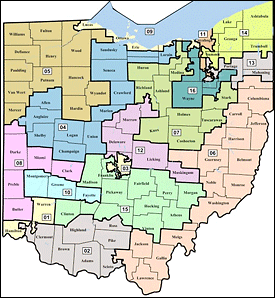Across the nation, some eye-opening new polls have cast several races in a different light. Except for the Missouri debacle involving Rep. Todd Akin (R-MO-2) and his quest for the US Senate seat, which has blown up on the Republicans over their candidate’s rape-related abortion comments, some other recently released data is decidedly breaking the GOP’s way.
In Florida, Foster McCollum White & Associates, in conjunction with the public affairs firm Douglas Fulmer & Associates, surveyed 1,503 registered Florida voters on Aug. 17 and found not only Mitt Romney leading President Obama by a heretofore unheard of 54-40 percent count, but Rep. Connie Mack IV (R-FL-14), fresh from his strong Aug. 14 Republican primary victory, also jumped out to a 51-43 percent advantage over his opponent, two-term Sen. Bill Nelson (D). Mack has proved to be a stronger than anticipated candidate, thus paving the way for what is becoming a highly competitive campaign. This is the Republicans’ best Florida poll to date.
From an internal campaign survey taken over a month ago (OnMessage; July 16-17; 400 registered Colorado 7th District voters) for candidate Joe Coors Jr. (R) but just released now, the Republican challenger leads veteran Rep. Ed Perlmutter (D) 45-36 percent. No data has shown anything close to this margin so far and the spread here doesn’t fit the district’s normal voting patterns. More data showing a similar trend will have to be released before such a result is confirmed as being accurate. Expect the Perlmutter campaign to shortly counter with a different set of numbers.
In Nevada’s new 4th District, another seat created via reapportionment, Public Opinion Strategies (Aug. 7-9; 400 likely NV-4 voters) polling for the American Action Network, gives GOP nominee Danny Tarkanian a 46-35 percent lead over state House Majority Leader Steven Horsford (D). Like the set of numbers mentioned above in Colorado, these numbers seem to paint a more rosy Republican picture than how the region normally votes. A Democrat candidate should have the advantage in this northern Las Vegas area CD, so more will have to be learned before such a result is fully accepted.
Finally, countering last week’s internal campaign poll from New York GOP nominee Chris Collins, which showed the Republican jumping out to a double-digit lead, Siena College (Aug. 12-14; 628 registered NY-27 voters) finds the former Erie County Executive to be leading freshman Rep. Kathy Hochul (D) 47-45 percent. Since the new 27th CD is the safest Republican seat in New York, it is plausible that the Democrat incumbent would be trailing here. This race is a hotly competitive campaign and a must-win for New York Republicans.






